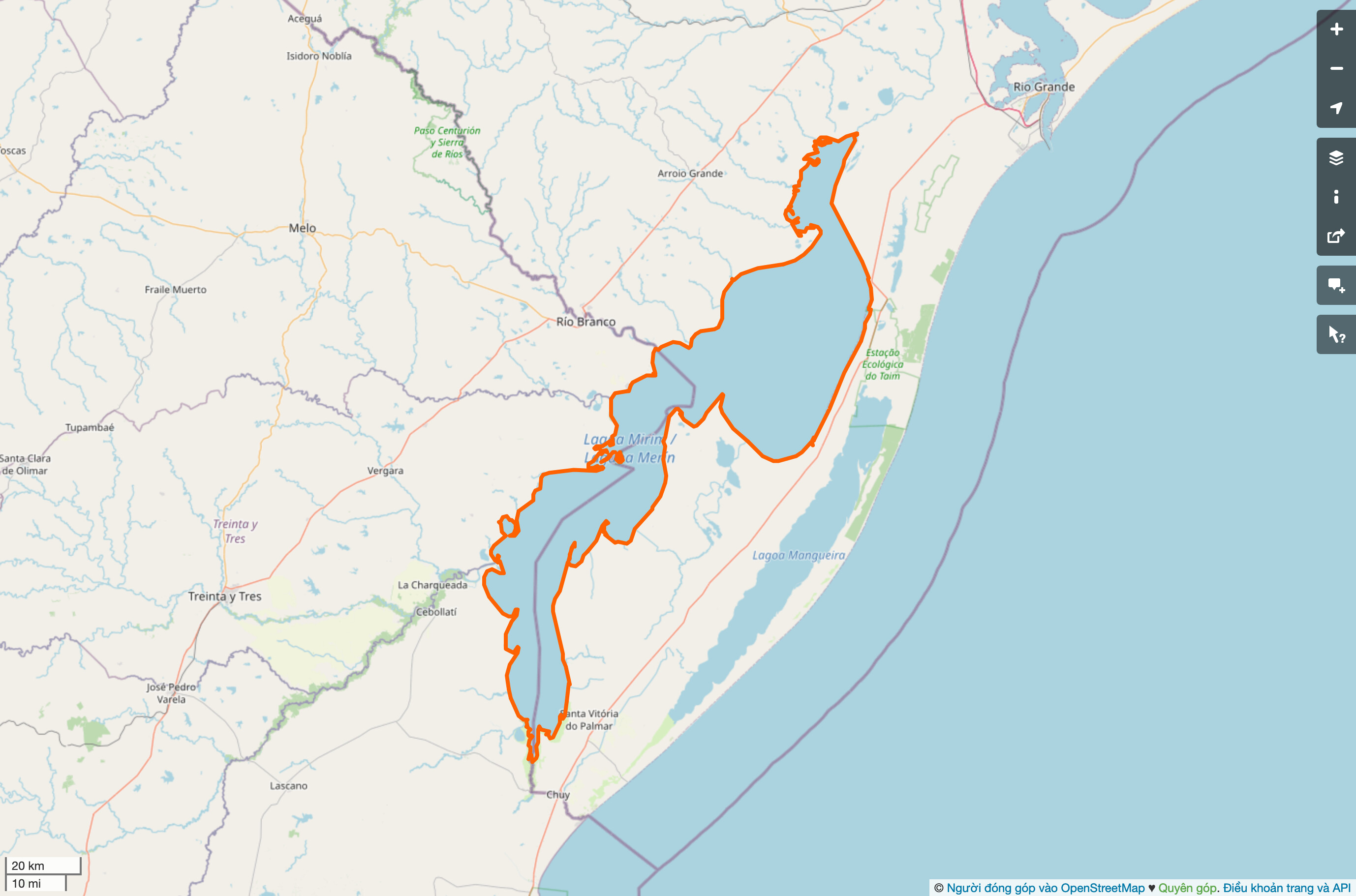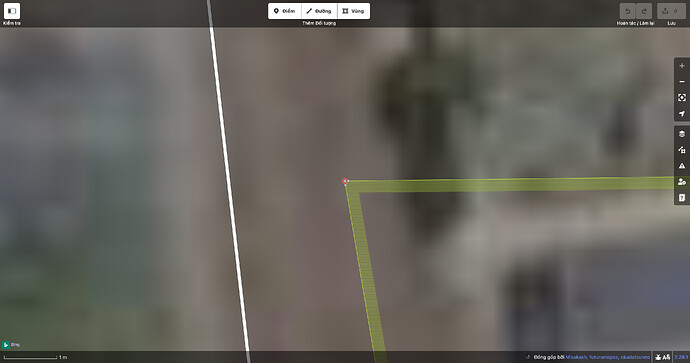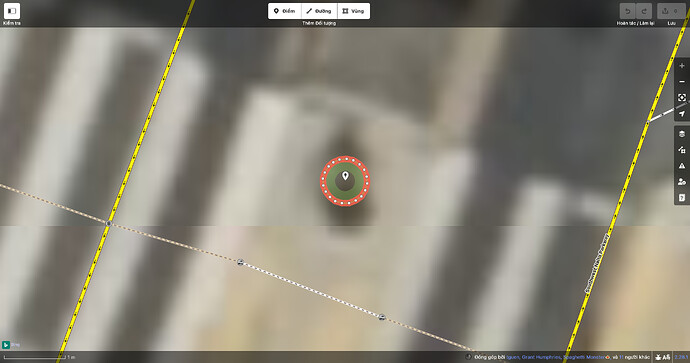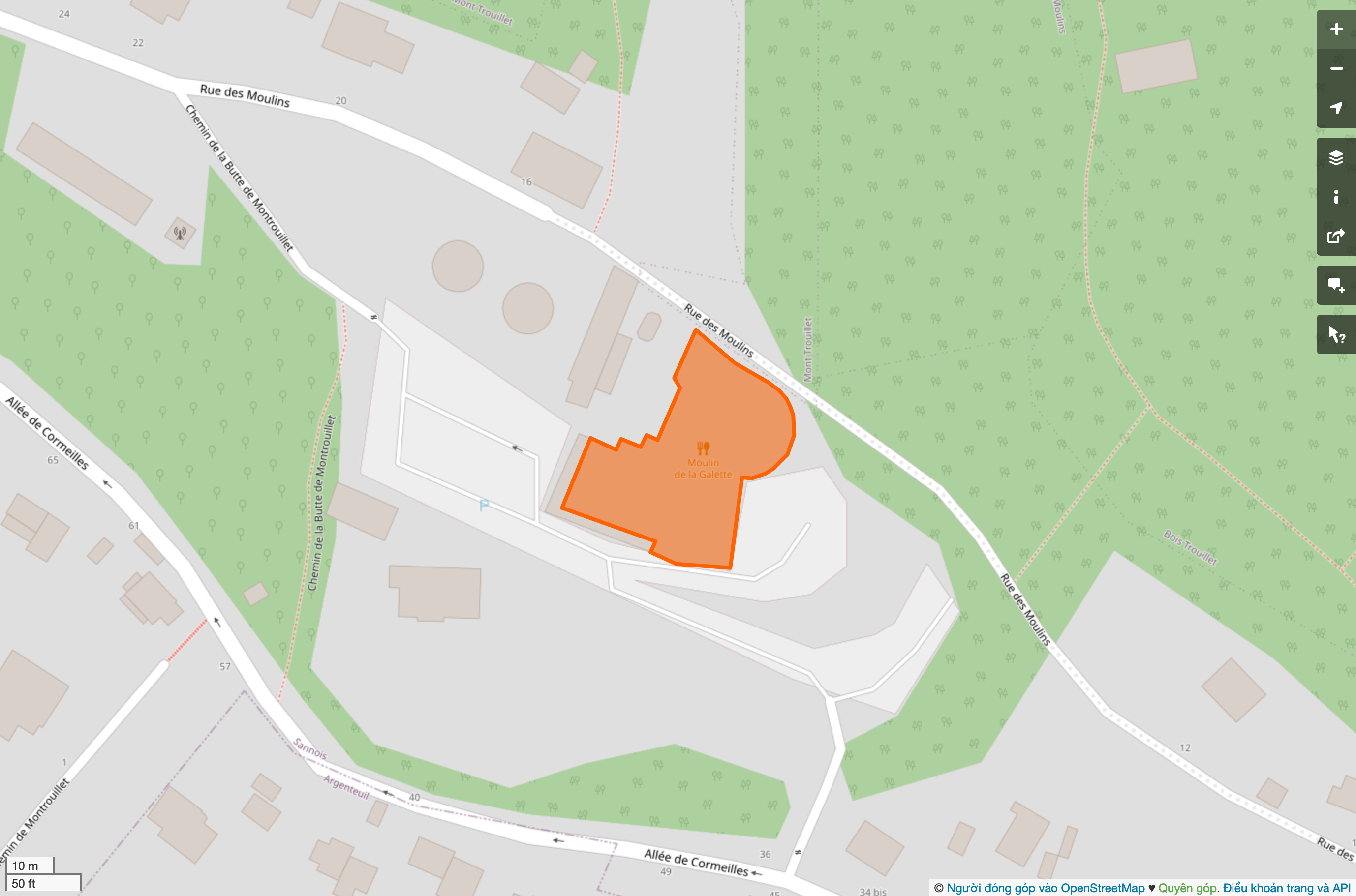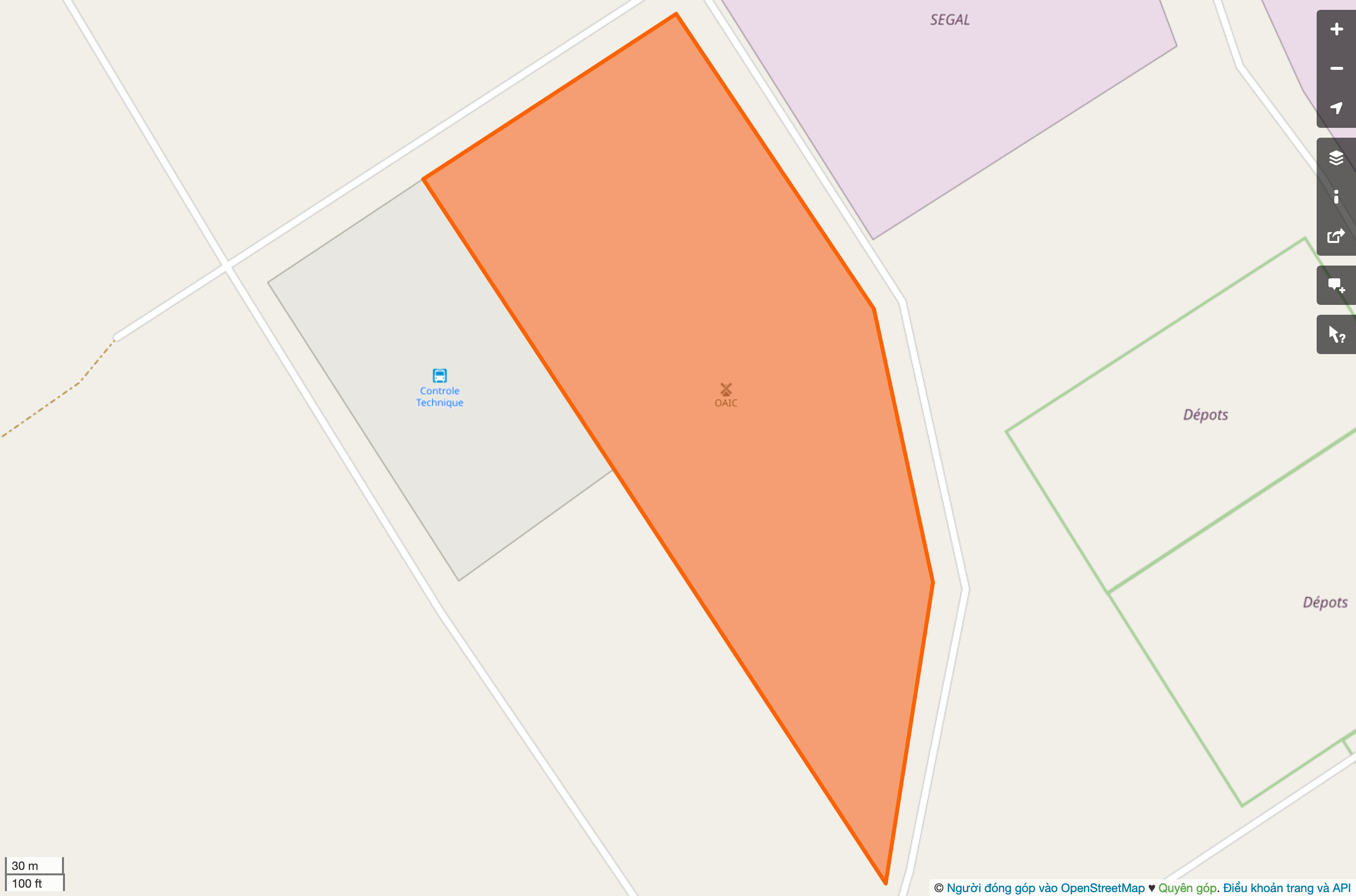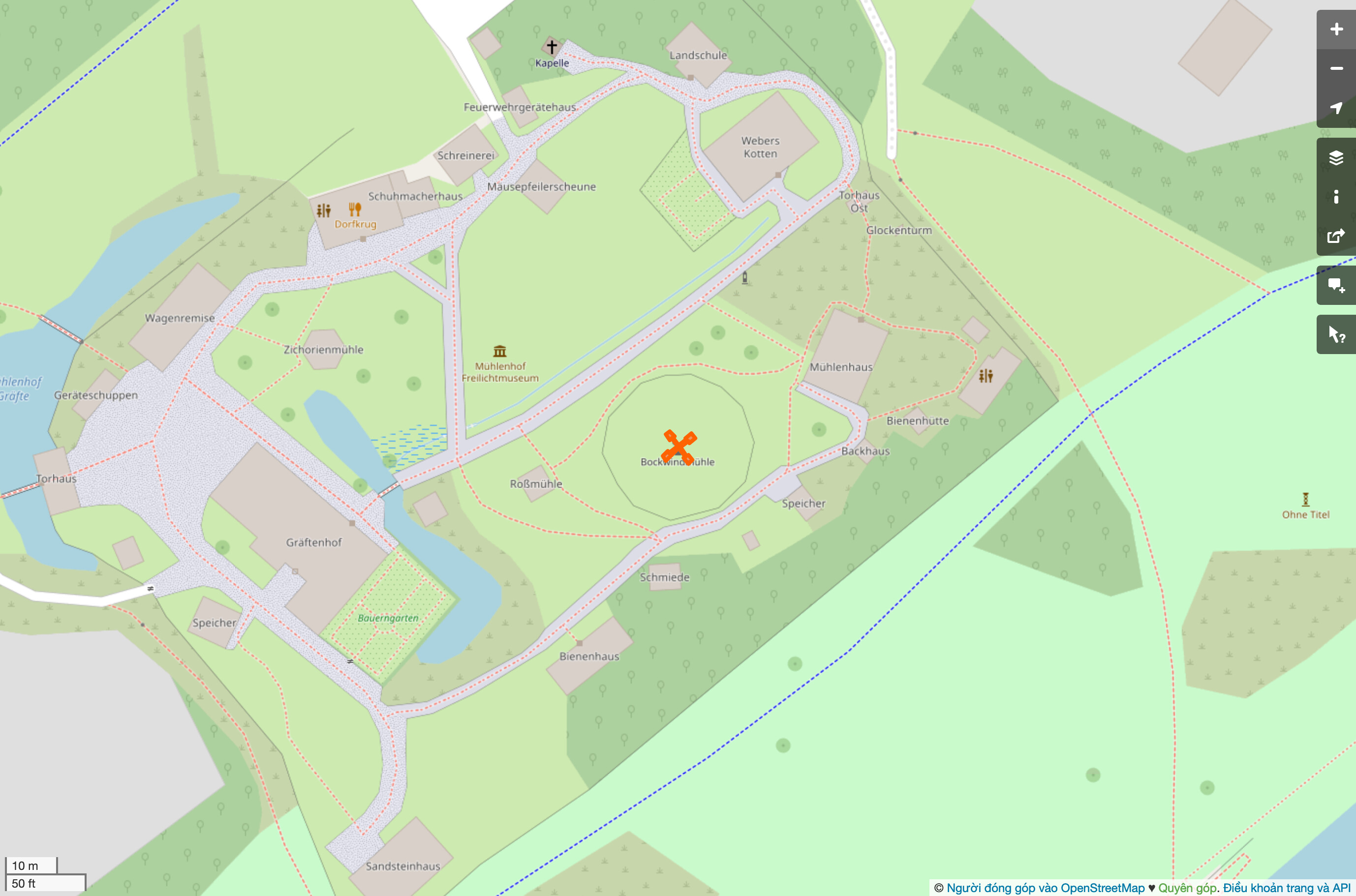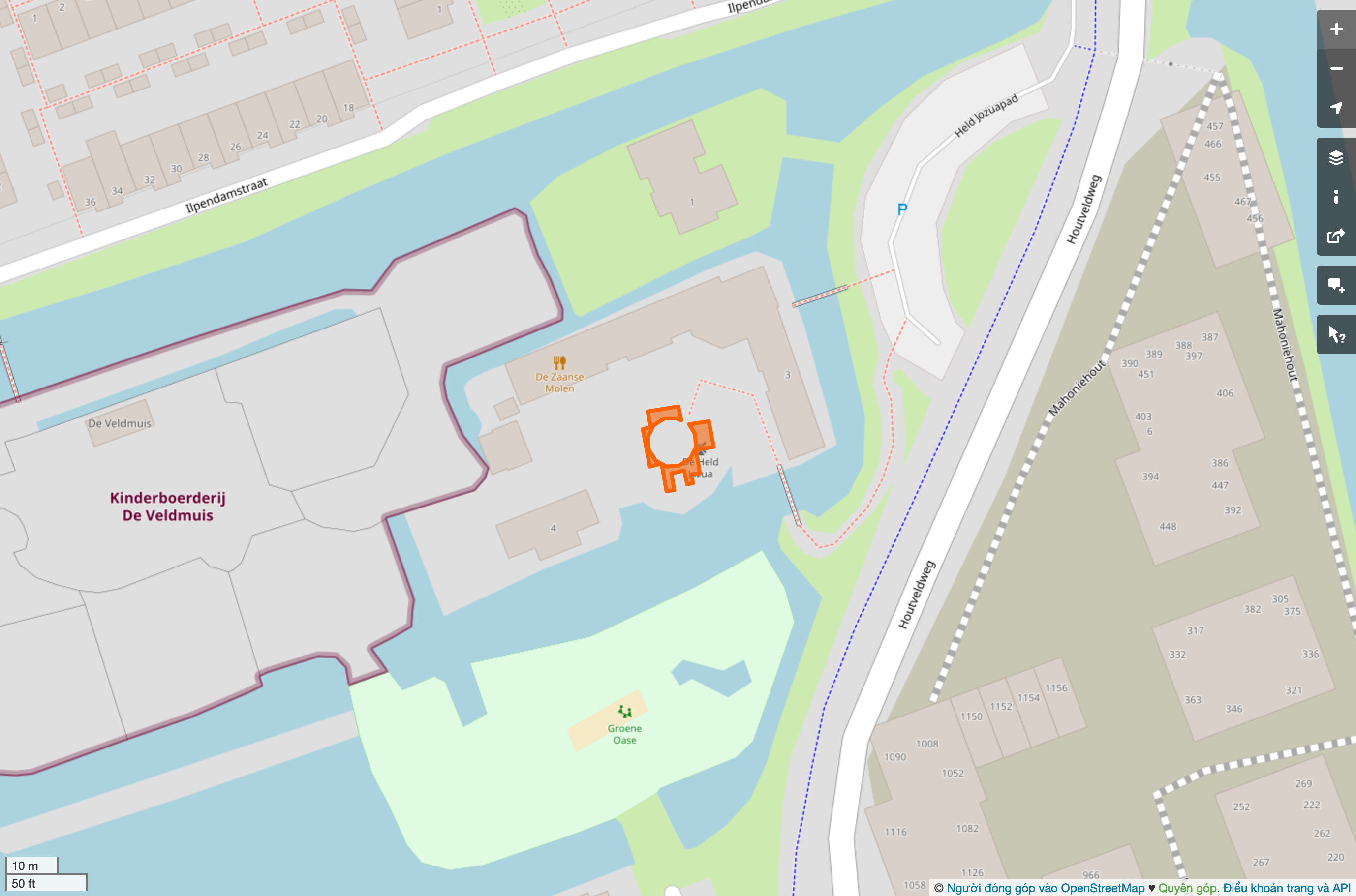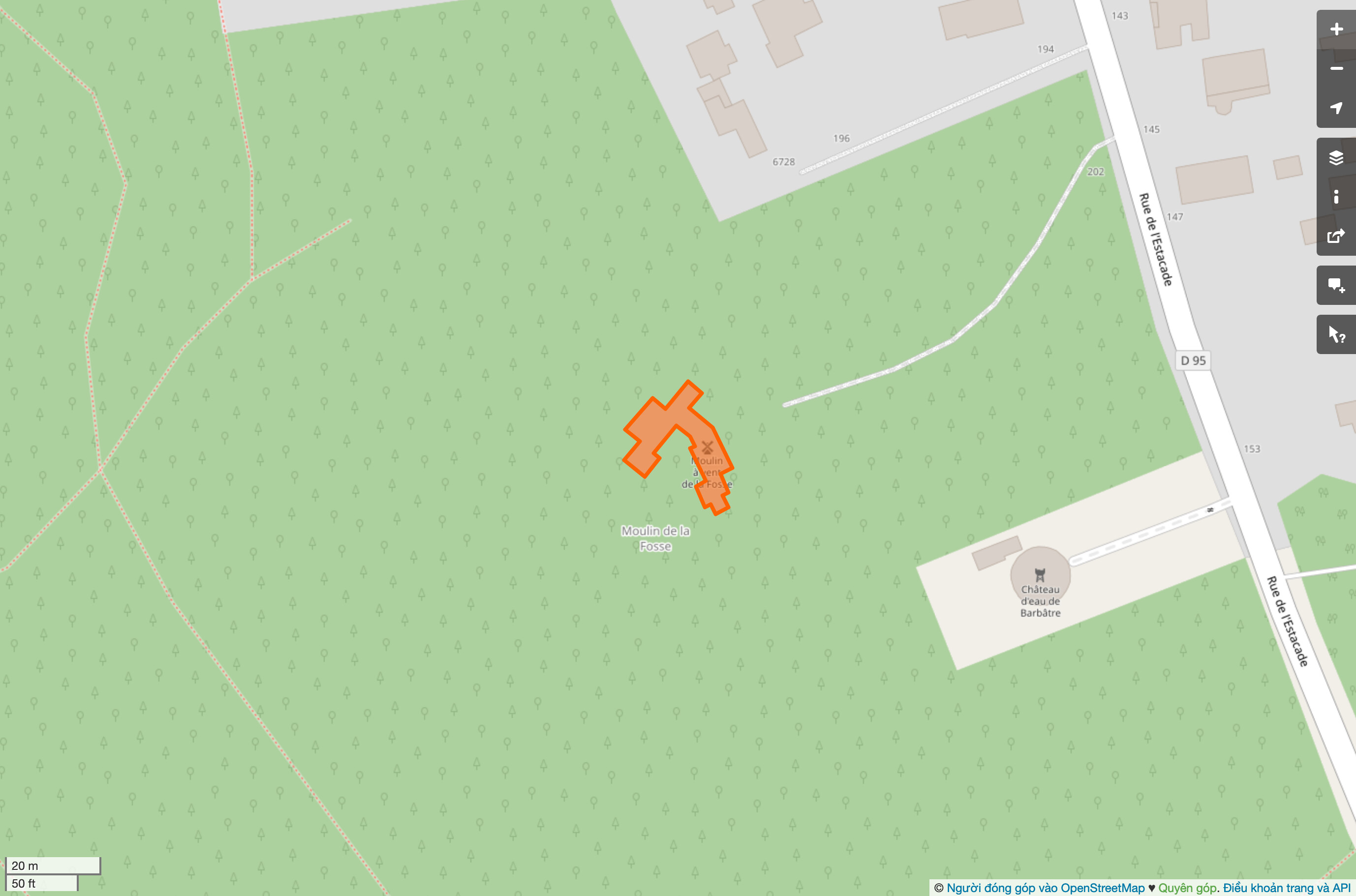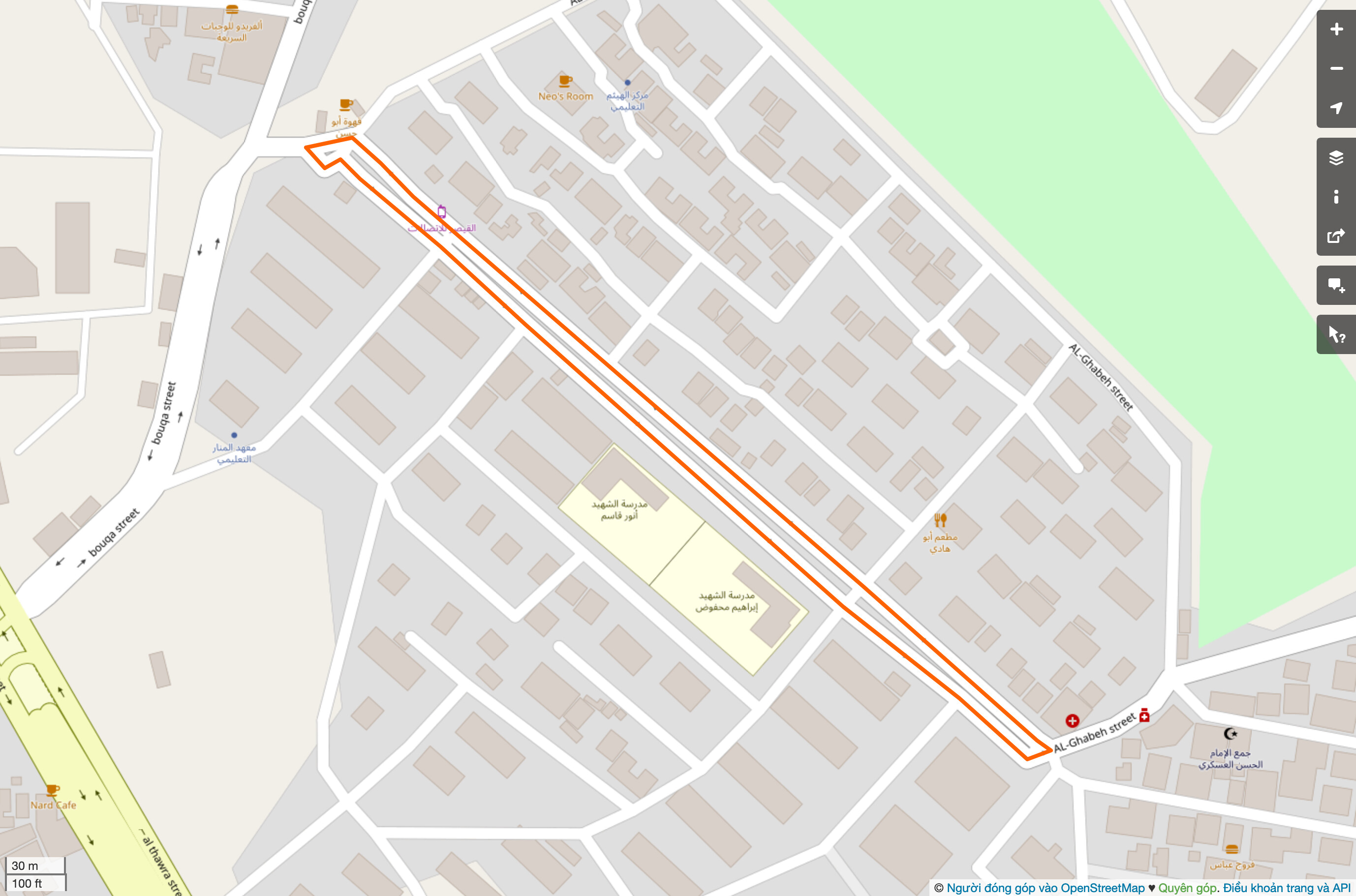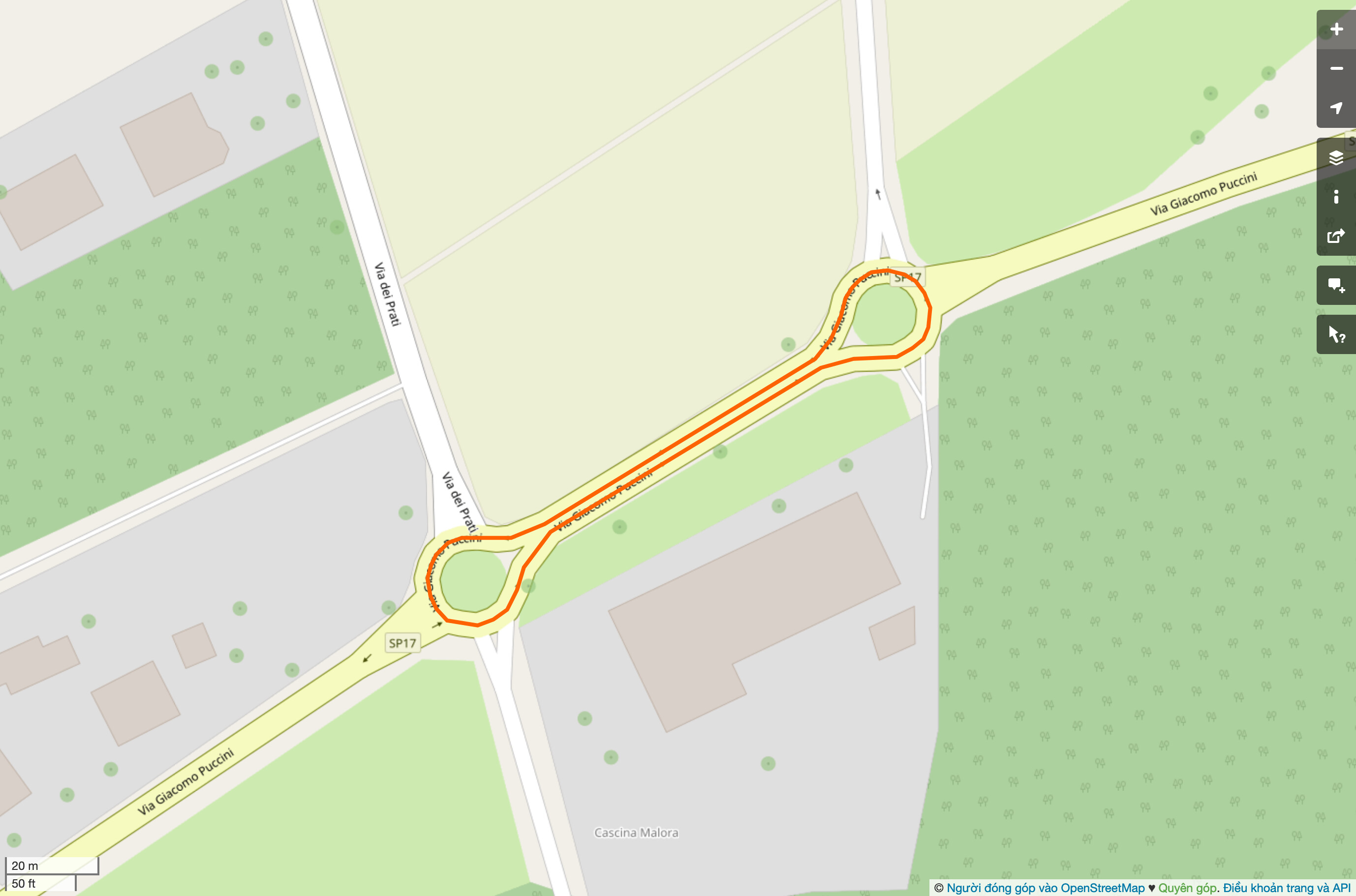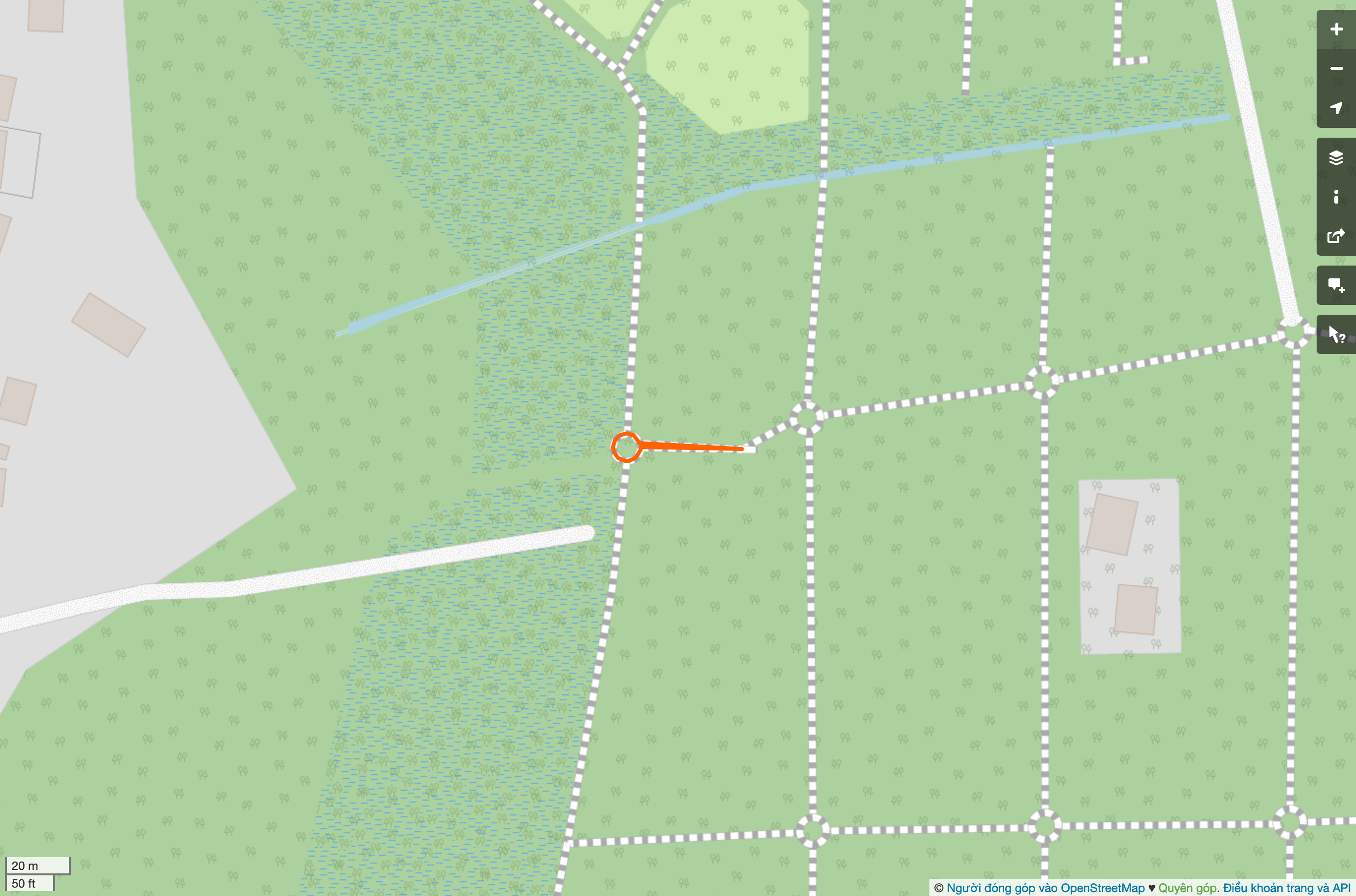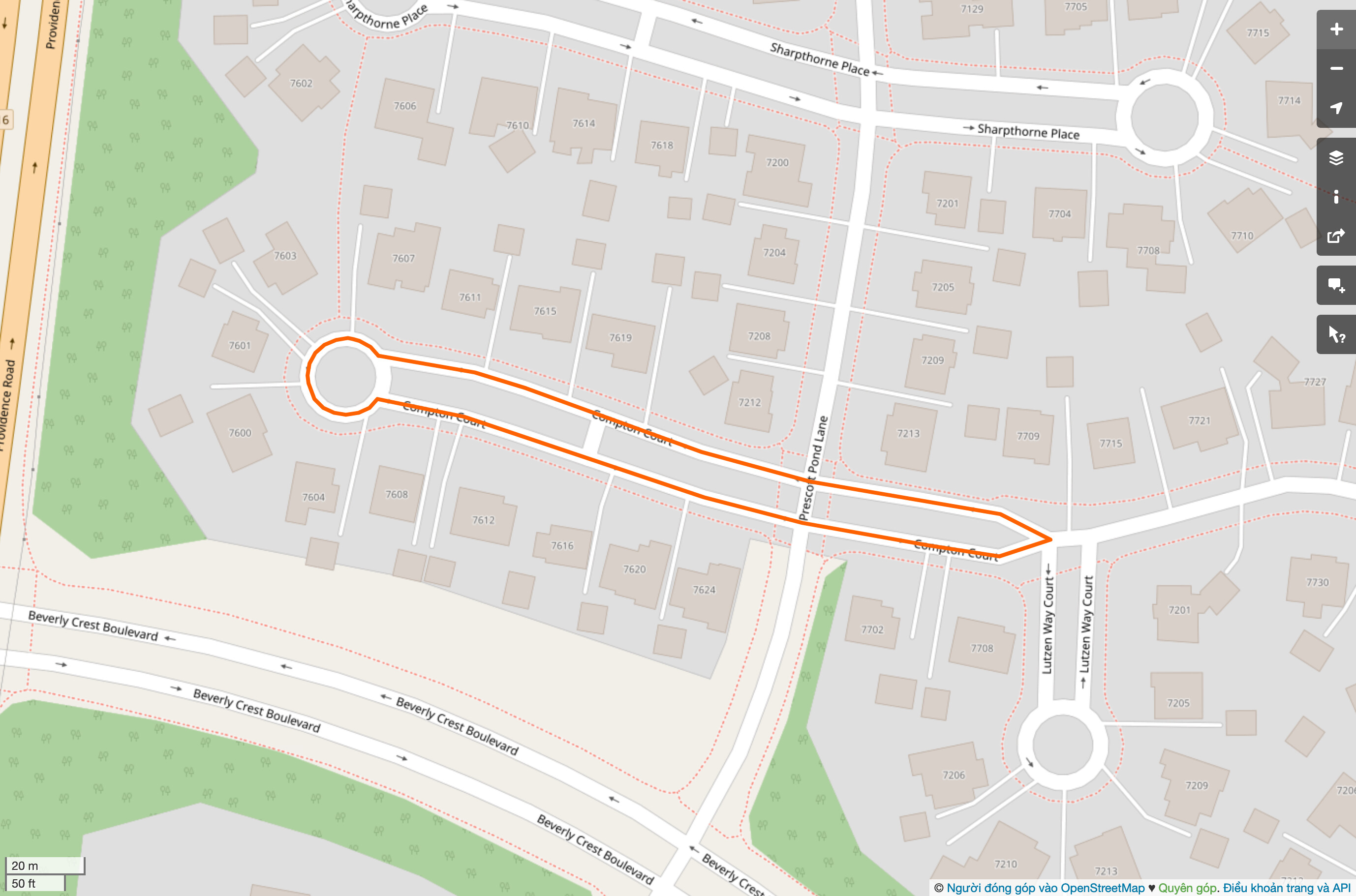For completeness, QLever indexes features by area (apparently in hectares). As of writing, QLever is current as of March 21, so the 500 biggest benches don’t account for recent edits. So I started looking at some other superlatives that haven’t gotten as much attention.
Would we call each of the 500 largest ponds ponds? Do you all have a different definition of pond across the pond?
Of the 500 smallest parks, the smallest manages to cram all the amenities required of a city park in less than 9 square centimeters. The current official recordholder comes in at a mere 34th place, soon to be 35th:
Some of the 100 largest windmills don’t have particularly wind-millable shapes:
To find more unlikely windmills, I tried ranking them by Polsby–Popper compactness, figuring that a windmill ought to have a sturdy foundation.[1] The least compact windmill appears to be the result of someone mapping the blades as they lay on the ground:
Now let’s see how well we draw circles. For kicks, let’s pretend that junction=roundabout and junction=circular are actually supposed to be round and circular, respectively.
Incidentally, the Polsby–Popper test is a good measure of political gerrymandering. ↩︎
